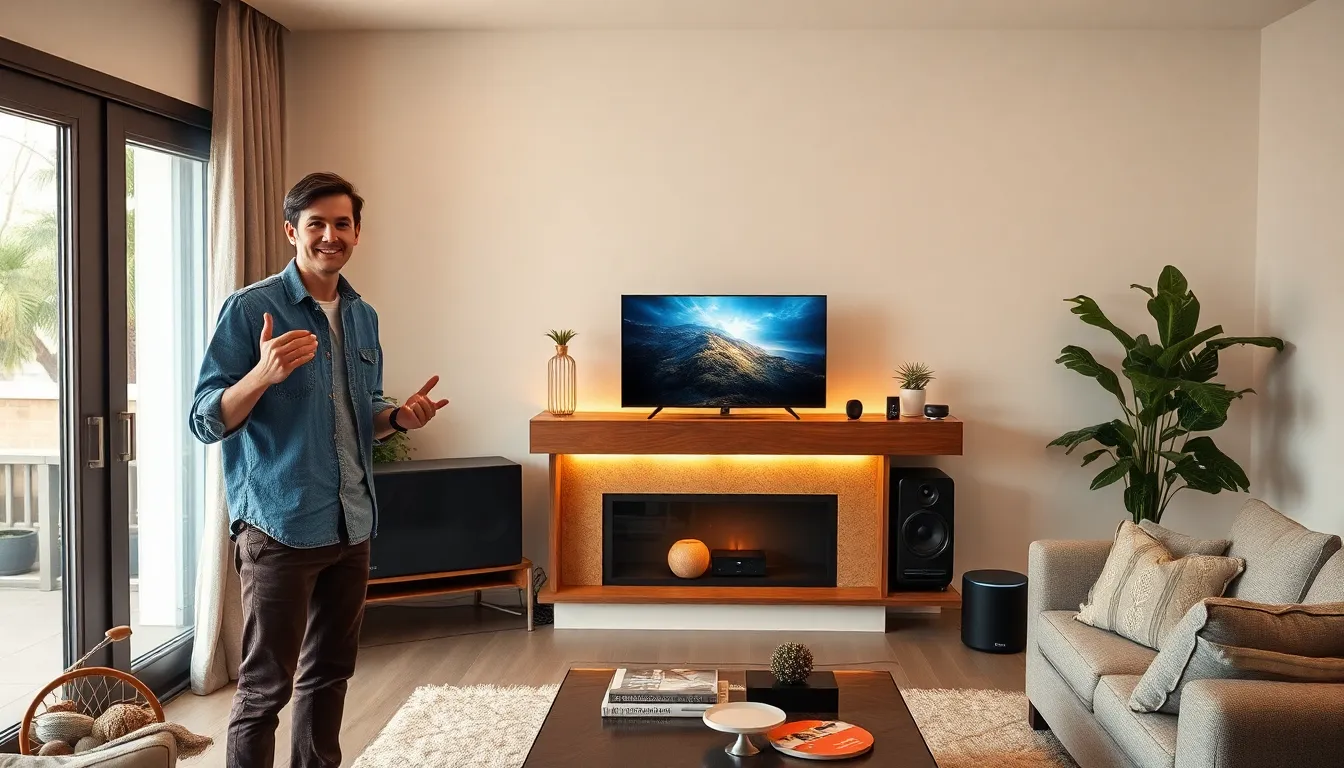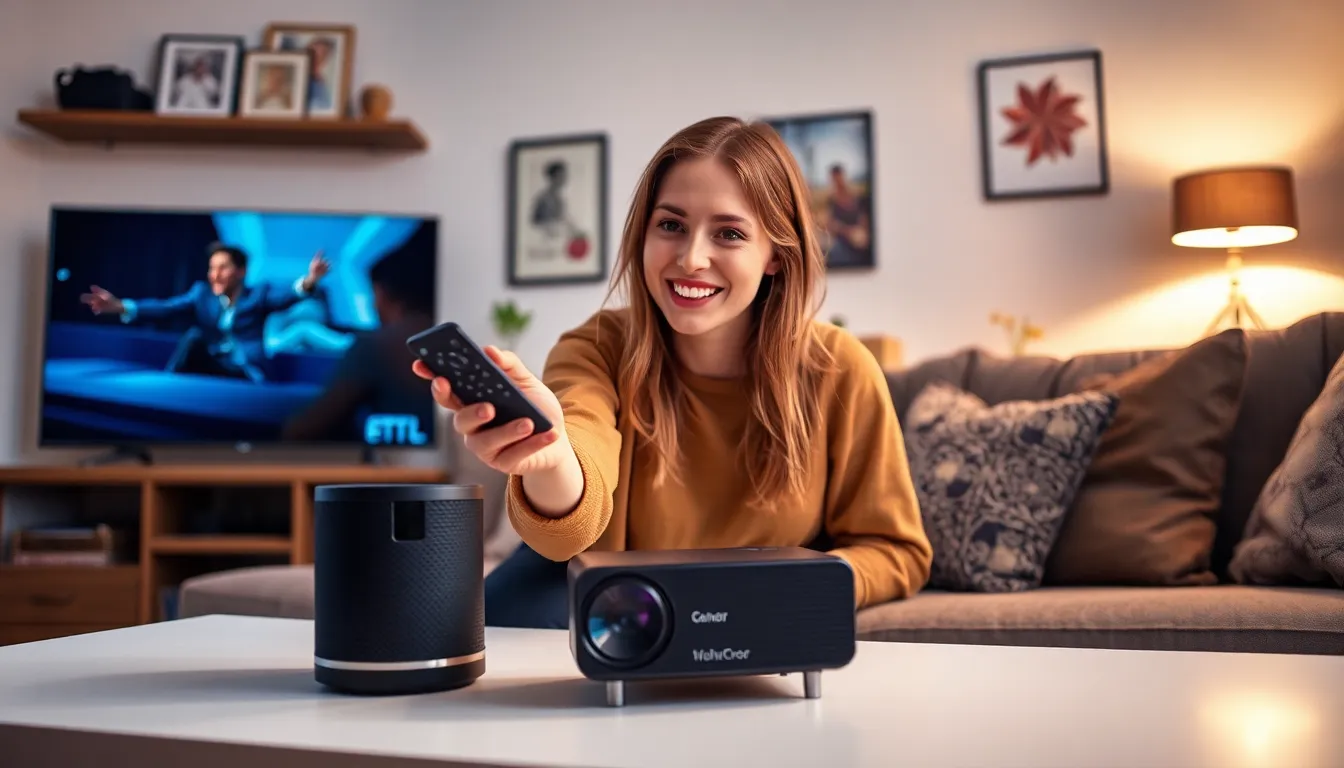Wearable devices have transformed the way people interact with technology, seamlessly blending into daily life. From fitness trackers to smartwatches, these gadgets not only enhance convenience but also empower users to monitor their health and stay connected on the go.
As technology advances, the capabilities of wearable devices continue to expand, offering features like heart rate monitoring, sleep tracking, and even stress management. This growing trend reflects society’s increasing focus on health and wellness, making wearables an essential part of a modern lifestyle. With endless possibilities, the future of wearable technology promises to be even more exciting and impactful.
Table of Contents
ToggleOverview of Wearable Devices
Wearable devices refer to technology that individuals can wear on their bodies. These gadgets integrate various sensors and connectivity features, allowing users to track and monitor personal health metrics. Common types include smartwatches, fitness trackers, smart glasses, and health monitors.
Wearable devices function using wireless technology, ensuring seamless communication with smartphones and other devices. These connections enable real-time data transfer and notifications, enhancing user engagement. Users can access information directly from their wrists or bodies, promoting convenience.
Health-related features dominate the wearable devices market. Popular functionalities include:
- Heart Rate Monitoring: Tracks heart rates in real-time, providing insights on fitness levels and cardiovascular health.
- Sleep Tracking: Analyzes sleep patterns to enhance sleep quality and overall well-being.
- Activity Tracking: Monitors steps, distance, and calories burned, encouraging users to maintain active lifestyles.
- Stress Management: Measures stress levels through various indicators, offering tips to manage stress effectively.
Advancements in wearable technology continue to evolve quickly. New models frequently introduce features such as blood oxygen monitoring and ECG capabilities, reflecting the industry’s focus on comprehensive health analytics.
Compatibility with health apps enhances the utility of wearable devices. These apps allow users to store and analyze data over time, enabling better health decisions. Integration with platforms like Apple Health and Google Fit further expands the potential for personalized health management.
Wearable devices serve as essential companions for individuals committed to monitoring their health and improving their day-to-day lives.
Types of Wearable Devices

Several types of wearable devices enhance user experience and support health and fitness goals. Each category offers unique functionalities that cater to different needs and preferences.
Fitness Trackers
Fitness trackers monitor physical activity and health metrics. These devices count steps, track distance, and measure calories burned. Many fitness trackers incorporate heart rate monitoring and sleep tracking, providing users with insights into their daily activity levels. Popular examples include Fitbit Charge and Garmin Vivosmart, both recognized for their accuracy and user-friendly interfaces.
Smartwatches
Smartwatches combine traditional watch functions with advanced technology. They connect to smartphones, enabling users to receive notifications, answer calls, and access apps directly from the wrist. Smartwatches often include fitness tracking features similar to fitness trackers, along with added capabilities such as GPS, music control, and voice assistance. Popular models include Apple’s Watch Series and Samsung Galaxy Watch, each offering unique features tailored to user preferences.
Health Monitors
Health monitors focus on providing comprehensive health insights. These devices may track vital signs such as blood pressure, blood oxygen levels, and even ECG readings. Many health monitors integrate with smartphone apps, allowing users to analyze data for better health management. Examples include the Withings Body+ scale and the Oura Ring, known for their precise health tracking capabilities.
Augmented Reality Glasses
Augmented reality (AR) glasses merge digital information with the physical environment. These innovative devices overlay graphics and data onto the user’s view, enhancing experiential learning, navigation, and interaction with digital content. Notable products include Microsoft HoloLens and Google Glass, both of which cater to various applications, from gaming to industrial use.
Benefits of Wearable Devices
Wearable devices offer numerous advantages that enhance daily life, particularly in health monitoring, convenience, and user experience. These benefits contribute significantly to their growing popularity in the technology market.
Health and Fitness Tracking
Wearable devices excel in health and fitness tracking, providing real-time data on various health metrics. They monitor heart rate, step count, sleep quality, and activity levels. Users gain insights for informed health decisions that promote a balanced lifestyle. Popular models like the Fitbit Charge and Garmin Vivosmart demonstrate this capability, helping individuals set and achieve personal fitness goals. Many devices sync with health apps, allowing users to analyze long-term data trends and adjust their routines accordingly.
Convenience and Connectivity
Wearable devices enhance convenience through their ability to connect seamlessly with smartphones and other smart devices. They deliver notifications for calls, messages, and calendar alerts without requiring users to check their phones. This feature allows individuals to stay engaged with essential communications while managing their daily tasks. Additionally, they can control music playback and access apps directly from their wrist. The convenience factor keeps users organized and responsive throughout the day without interruptions.
Enhanced User Experience
Wearable devices significantly improve the user experience by integrating advanced technology with intuitive designs. They offer customizable interfaces, allowing users to personalize display options and functionality. Some wearables provide guided workouts, mindfulness exercises, and even reminders to move, tailoring features to individual preferences and needs. Enhanced battery life and comfort during extended wear further support a positive experience. As technology advances, user interfaces continue to evolve, ensuring that wearables remain user-friendly and effective in meeting health and connectivity needs.
Challenges and Limitations
Wearable devices face several challenges that can impact their effectiveness and user satisfaction. These include privacy concerns, battery life limitations, and compatibility issues.
Privacy Concerns
Privacy concerns present significant challenges for wearable devices. Wearables collect sensitive personal data, including health metrics, location information, and daily habits. Unauthorized access to this data could lead to breaches of confidentiality and misuse. Users must consider the security protocols employed by manufacturers and the potential risks when sharing data with third-party apps. Regulatory frameworks, such as the General Data Protection Regulation (GDPR), aim to provide protections, yet consumers remain wary of how their data is used and stored.
Battery Life
Battery life is a critical limitation affecting user experience with wearable devices. Many devices operate continuously, monitoring health metrics and sending notifications throughout the day. Frequent charging can become inconvenient, leading some users to disengage from regular tracking. Manufacturers focus on improving battery longevity through more efficient hardware and software optimizations, but trade-offs often exist between functionality and battery life. Users may find themselves balancing desired features with the reality of battery performance.
Compatibility Issues
Compatibility issues arise when wearable devices do not integrate seamlessly with various operating systems and smartphone models. Not all wearables support the same apps or synchronize efficiently with all devices. This limitation can hinder user experience, as users may miss out on critical features due to device incompatibility. Manufacturers strive to broaden compatibility and enhance user connectivity through software updates and partnerships, yet challenges persist, particularly across different operating platform ecosystems.
Future Trends in Wearable Devices
Wearable devices face rapid evolution, driven by technological advancements and changing consumer needs. Key trends in this domain include:
- Enhanced Health Monitoring: Wearable devices now incorporate advanced sensors for tracking metrics like blood glucose levels, hydration, and body temperature, increasing their role in preventive healthcare.
- AI Integration: Artificial intelligence enhances data analysis, providing personalized health insights. Wearables equipped with AI algorithms can offer tailored health recommendations based on user behavior and preferences.
- Augmented Reality: Emerging AR technology in wearables allows users to interact with digital content in real-time. Products combining AR with traditional wearable functions open new avenues for immersive experiences in fitness and education.
- Improved Battery Life: Ongoing developments focus on extending battery life, promoting user engagement. Innovative power management techniques allow wearables to function longer without frequent recharging.
- Personalization Features: Customizable wearables, with adjustable interfaces and features, allow users to design their experiences. Personalization improves user satisfaction and increases device loyalty.
- Cloud Connectivity: Wearable devices increasingly rely on cloud connectivity for data storage and processing capabilities. This trend supports extensive data analysis and fosters a more comprehensive health monitoring system.
- Wearable Payment Solutions: Integrating payment functionalities into wearables simplifies transactions. Contactless payments through devices such as smartwatches and fitness trackers promote convenience and security.
- Focus on Mental Health: Wearable devices now prioritize mental well-being by offering stress management tools, mindfulness exercises, and mood tracking features, catering to the growing emphasis on mental health.
As wearable device technology continues to advance, innovations will likely redefine health tracking and user experience, positioning these gadgets as indispensable tools in daily life.
Wearable devices are transforming how individuals approach health and wellness. As technology continues to evolve these gadgets are becoming essential tools for monitoring vital health metrics and enhancing daily convenience. With advancements in features like blood oxygen monitoring and stress management users are empowered to make informed health decisions.
The growing integration of wearable devices into everyday life reflects a shift towards a more health-conscious society. While challenges like privacy concerns and battery life persist the future of wearable technology looks promising. As innovations unfold these devices will likely play an even more significant role in personal health management and overall well-being.




